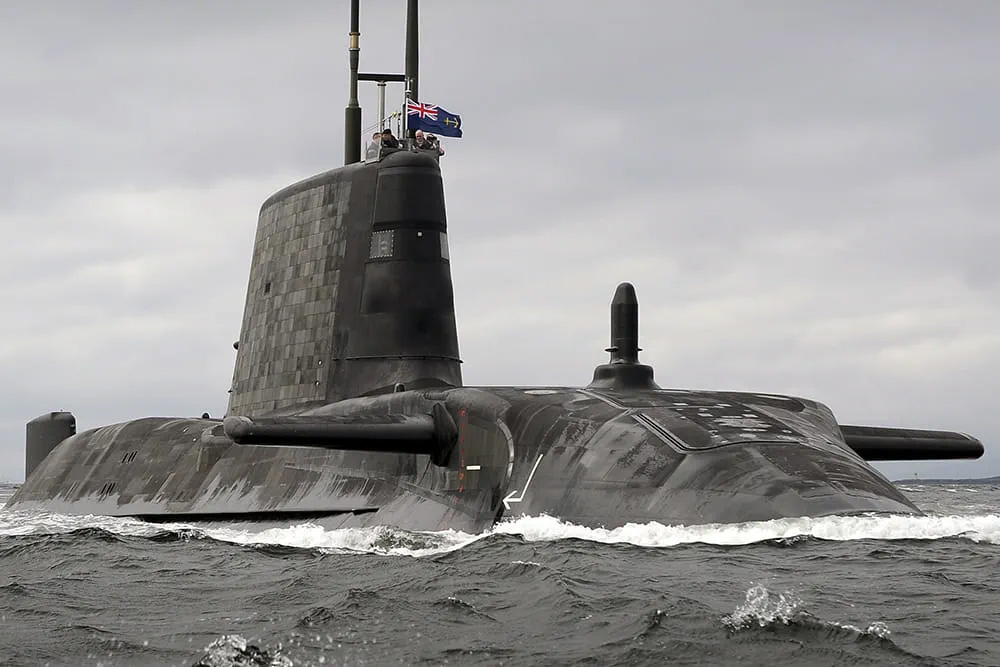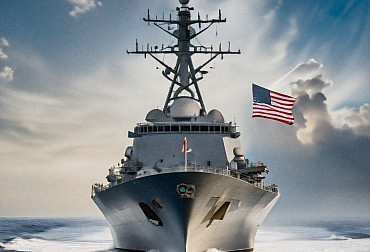British and American submarine problem
The British Royal Navy is facing major problems with its submarine availability. It could get worse due to AUKUS commitment and the U.S. problems with Virginia-class availability. This could also mean that there will be much fewer carries of the key weapon system for the conventional deterrence, Tomahawk missiles.

According to the latest analysis by the OSINT account TBrit90 on X, the British Royal Navy is facing a major problem because, at least for 47 days, there were no Royal Navy nuclear-powered attack submarines (SSN) at sea. This alone is a major problem. What could be a sign of a much bigger problem is the fact that the last submarine of the newest British SSN class, Astute, appeared at sea 121 days ago. Other ships from this class suffer from maintenance problems and their operational readiness is being questioned, as other submarines are in the maintenance from 476 to 749 days. This means that the British Royal Navy is not very likely to maintain the presence of SSNs at sea, which could cause trouble during a hypothetical war scenario, for example, with Russia.
The Navy Lookout magazine brought this topic up one year ago in an article stressing the fact that the availability of both SSNs and nuclear-powered ballistic missile submarines (SSBNs) for at-sea deterrence is declining due to decreased availability of dry docks and other maintenance facilities. The article states that it is unfortunate to be unable to monitor especially Russian naval activities in the Norther, Black, and Mediterranean seas, which are increasing. The article also points out that as part of the AUKUS Treaty, one British SSN will be permanently deployed to Perth in Australia from 2027 and will increase submarine presence in the Indo-Pacific. This commitment will require the Royal Navy to dramatically increase the availability of SSNs to be capable of maintaining presence both in Europe and in the Indo-Pacific.
On August 5, the Congressional Research Service published a report on the Virginia-class submarine program and Pillar 1 of the AUKUS Treaty. It is well known that Virginia class submarines have suffered from low availability (around 70%) in recent years due to poor maintenance capacity and poor conditions and low wages in the shipbuilding industry, making the U.S. shipbuilding industry uncompetitive at the beginning of an era of Great Power Competition with the People's Republic of China. The hypothetical war between these two countries will be decided in air and naval domains, and if the U.S. shipbuilding industry is in poor condition, it means that the U.S. could lose the hypothetical war. In general, there are approximately only 30 submarines out of 48 that could be deployed.
Moreover, the AUKUS Treaty obliges the U.S. Navy to deploy four SSNs to Western Australia (probably to Perth together with one British SSN). This puts maintenance and industrial capacities under further pressure. Moreover, the U.S. Government plans to sell three to five Virginia-class SSNs to the Royal Australian Navy in the future. This situation could lead to very dangerous consequences as the U.S. Navy plans to build 2.33 submarines per year from Fiscal Year 2028 to be able to replace those submarines sold to Australia. Moreover, although the U.S. Navy plans slight decline of the SSN Force level in Fiscal Year 2030 and increase from 2023 to 2054, this shipbuilding plan does not take into account the current shipbuilding industry problems, low maintenance capacities, and AUKUS Treaty, which could further hinder U.S. efforts to bolster its SSN forces to 64 or 66 SSNs in Fiscal Year 2054.
The British Royal and the U.S. Navy capabilities to deter and if necessary, defeat an opponent could be seriously hindered due to the fact that both Virgina- and Astute-class carry Tomahawk Block IV cruise missiles which are one of the key weapons systems in the potential Indo-Pacific theater of operations.
The inability to hit targets at ranges beyond 310 miles (500 km) from submersible positions could seriously hinder both British and U.S. capability to hit both surface and ground targets along the Chinese southeastern coast, which could result in the freedom of movement of the People's Liberation Army in the First Island Chain. This could consequently lead to invasion of Taiwan or further coercion of Philippines and other countries in the South China Sea.








